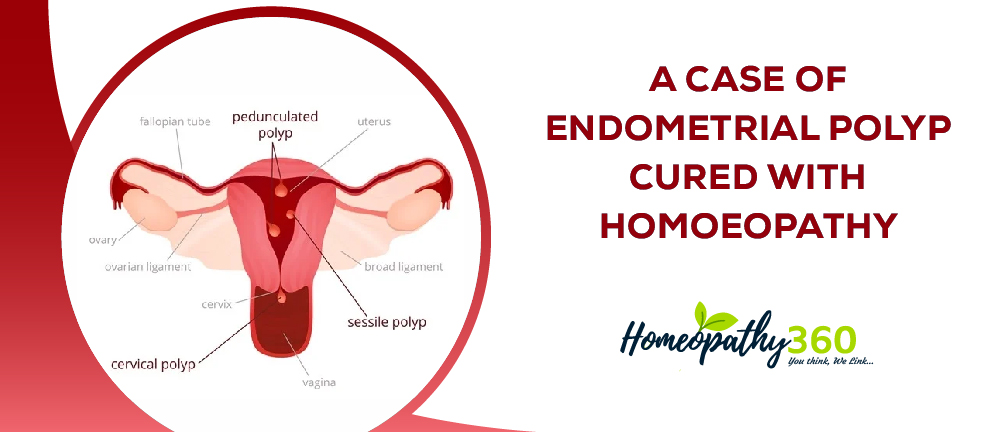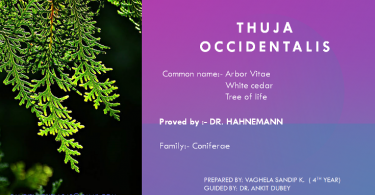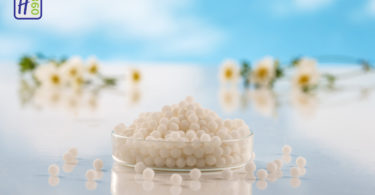
A case of endometrial polyp cured with homoeopathy
Abstract: Endometrial polyps or uterine polyps are abnormal growths of endometrial glands which typically protrude into the uterine cavity. Endometrial polyps are relatively common and usually benign in nature, may affect women of reproductive age groups as well as post-menopausal women. In modern medicine, surgical intervention is the only treatment but as per my little experience, most of the female gynaecological diseases can be cured effectively by a well selected homoeopathic simillimum. The constitutional approach always yields wonderful results.
Keywords
Abbreviations: Ultrasonography (USG), hormonal replacement therapy (HRT), last menstrual period (LMP), aggravation (>), amelioration (>)
Introduction
Endometrial polyps, also called uterine polyps, are discrete outgrowths of endometrium that contain a variable amount of gland stroma and blood vessels, attached by a pedicle, which moves with the flow of the distension medium. They may be pedunculated or sessile (1,2), single or multiple. They may vary in size from as small as a sesame seed to as big as golf ball (0.5 – 4 cm). It is probable that they are present in 25% of women with abnormal vaginal bleeding although atleast 10% of asymptomatic women are also likely to have polyps.(2)
In most cases, the uterine polyps are benign but removal is necessary to exclude the remote possibility of infertility & malignancy.
Causes
The cause is unknown. It may be linked to changes in oestrogen levels. Endometrial polyps are more common in reproductive age group especially in 40s or 50s. It may be due to the changes in oestrogen levels that happen just before and during menopause.(3)
It would appear that these endometrial polyps are relatively insensitive to cyclical hormonal changes and so are not shed at the time of menstruation. In addition they may contain hyperplastic foci, particularly in those that are symptomatic.(2)
The other risk factors may include:
Obesity
Hypertension
Diabetes
Women experiencing abnormal bleeding while taking HRT
Tamoxifen – a drug used for breast cancer (found in upto 30% of such cases)(4)
Clinical presentation
- Asymptomatic, especially in case of solitary/ small sized polyp
- Unscheduled vaginal bleeding or spotting is the commonest symptom. The persistent intermenstrual bleeding for at least 3 months or more is significant.
- Heavy bleeding
- Vaginal bleeding after menopause
- Trouble getting pregnant
Complications of uterine polyps
Malignant change is rare but it may coexist with endometrial carcinoma.
The predictors of malignancy are: (a) Size more than 10mm; (b) Postmenopausal status; (c) Abnormal uterine bleeding (4)
Polyps also interfere with fertility because they can keep a fertilized egg from attaching to your uterus or block your fallopian tubes or cervix.
Miscarriages are more common in females having polyps.
Diagnosis (2,3)
- Ultrasound (USG)
- Transvaginal ultrasound (TVS)
- Hysterosonography
- Hysteroscopy
- Endometrial biopsy
Case report
Introduction
Miss Pink, aged 27 years, unmarried female came to me on 14th September 2020 with the complaint of irregular vaginal bleeding with weakness and trembling of legs. She was working as a beautician but stopped due to lockdown imposed during Covid-19. She was fair in complexion, with blue circles around the eyes.
Presenting complaints
The chief complaints of the patient were intermenstrual vaginal spotting since 5-6 days. Along with that, she also complains of much weakness with trembling of legs.
History of presenting complaints
The patient was apparently well 5-6 days back then she started complaining of intermenstrual spotting when she urinates. She looked very depressed and sad. On further enquiry, it was found that some family disputes were going on for the last 15- 20 days since then she became silent and irritable; anger was quite visible but suppressed, otherwise she was a sincere happy girl but emotional too.
Menstrual history:
LMP: 29th August 2020
Duration 2-3 days
Character of the bleeding: Dark red in colour with few clots
Past history: she had acne in the past for which she had undergone homoeopathic treatment (6-7 months back)
Family history: Nothing specific was found
Physicals generals
The patient’s appetite was quite decreased, doesn’t want to eat anything. She is thirst less. She had desire for salty things. She is a hot patient.
Mental generals
She was irritable in nature, jealous, contradiction aggravated her. She became angry on slightest triggers but didn’t express herself. Suppressed anger, used to weep only when alone, fastidious.
On examination:
The patient was found to be hypotensive; measured blood pressure was 100/60mm Hg. The appearance of tongue was found to be clean and moist.
Investigations: Ultrasound revealed that the endometrial lining was mildly thickened and heterogenous in ecopattern. The endometrial thickness is 13mm.
Endometrial polyp sized 11* 7.8mm.
Analysis and evaluation of symptoms
| Mental generals | Physical generals | Particulars |
| Irritability++ Jealousy+++ Weeps when alone++ Contradiction aggravates++ | Thirstless ++ Desire salty things Hot patient | Intermenstrual bleeding while urination Hypotension Weakness with trembling of legs |
Miasmatic Analysis (5)
| S.No. | Presenting symptoms | Psora | Syphilis | Sycosis | Tubercular | Predominant miasm |
| 1 | Irritability | √ | √ | Tuberculo-psoric | ||
| 2 | Jealous | √ | √ | |||
| 3 | Desiresalty | √ | ||||
| 4 | Weakness | √ | ||||
| 5 | Hypotension | √ | ||||
| 6 | Eyes – around blue rings | √ | √ | |||
| 7 | Menses- too frequent | √ | ||||
| 8 | Polyps- bleeding, uterine | √ |
Following symptoms were considered for Repertorisaton using Hompath(6):
- Mind – irritability
- Mind – jealousy
- Mind – weeping, tearful mood: alone, being agg
- Mind – contradiction: ailments from; agg
- Stomach – thirstlessness
- Generalities – food & drinks: salt or salty food desires
- Clinical – hypotension
- Extremities – trembling; legs
- Female genitalia – haemorrhage; uterine, metrorrhagia
Repertorial Result

Selection of remedy with justification
The repertorial result of the case showed that the highest ranked remedy which covers most of the symptoms of the patient was Natrum muriaticum. After considering materia medica, Natrum muriaticum was found to be a useful remedy for menstrual irregularities, depression. The general constitution and mental picture of the patient was also similar to Natrum muriaticum as described in materia medica(7). This remedy was also covering the predominant miasm, i.e. tuberculo-psoric miasm.(5)
Thus, according to the totality of the symptoms and miasmatic predominance, SINGLE DOSE of Natrum muriaticum 200CH was prescribed according to the susceptibility of the patient.
Prescription
Natrum muriaticum 200CH, single dose
Followed by Placebo 30, thrice a day for one month.
Management
Along with the homoeopathic medicines, the patient was advised to exercise regularly for atleast 30 minutes. She was suggested few disease specific yoga exercises to be followed regularly like butterfly pose, cobra pose (bhujangasana), standing forward bend, hare pose, etc.
Diet should include variety of healthy foods like whole grains, green leafy vegetables, low fat dairy products, seasonal fruits. Drink atleast 3-4 litres of water in a day. Restrict excessive salt or sweets intake. A diet rich in transfat should be avoided.
Follow -UPs
| Date | Symptoms | Prescription | Justification |
| 8th Oct 2020 | No intermenstrual spotting Patient feels better Menstrual history LMP: 27th September 2020 Duration : 7 days Flow: Profuse, dark red in colour with clots Leucorrhoea – white, thick, acrid, little offensive Pustular eruptions appear over genitals- old symptom She looks little better mentally too. | Placebo 30 | Return of old symptom indicates good response. It indicates that the path of recovery is following the right direction according to the Hering’s law of cure. Prognosis : good Next step should be “Wait & watch” |
| 4th Nov 2020 | No intermenstrual bleeding Patient is better in general Menstrual history LMP: 29th October 2020 Duration : 6 days Flow : Normal Multiple joint pains appeared but relieved without medicines Aggravation: Morning Painful eruption appear over tip of left index finger with Cracked & chapped finger tips < winters Eruptions over genitalia appeared on & off. | Placebo 30 Advise : Apply petroleum jelly over the cracked and chapped fingers | Patient is still improving in general. No intermenstrual bleeding occurs. There was coming and going of symptoms. One should not interfere with the ongoing action of remedy Next step should be “wait & watch” Advised for another USG |
| 10th Dec 2020 | No intermenstrual bleeding occur Painful eruption over tip of left index finger and cracked chapped hands better. Pustular eruptions over genitalia were still there. Acidity++ Eructations after eating Back pain (lumbo-sacral region) with stiffness | Natrum muriaticum 1M/ single dose Followed by Placebo 30 | Patient was better. But ultrasound revealed increase of the size of polyp, i.e. 13.3 * 9.4mm. But good point was the endometrial thickness was normal this time and heterogenous ecopattern turns homogenous. Pustular eruptions are still there. Therefore, higher potency of same remedy was used in spite of change of remedy. |
| 7th Jan 2021 | No intermenstrual bleeding occur Backache still same Acidity – same with pain in epigastrium Hyperpigmentation over cheeks Menstrual history LMP – 25 December 2020 Duration: 5-6 days Flow: normal Leucorrhoea – white, thick and offensive Mentally, the patient was indifferent to her family members especially to her mother whom she loved the most. | Sepia officinalis 1M | Due to the marked and peculiar symptom of the patient, i.e. “indifference with loved ones”, Sepia officinalis was chosen as it is the remedy which complements and follows Natrum muriaticum well.(7) |
| 5th Feb 2021 | No intermenstrual bleeding occurred Acidity better Back pain slightly better stiffness in the morning Menstrual history LMP – 21st Jan 2021 Duration: 6 days Flow: normal Leucorrhoea better Pustular eruptions reappeared but in less intensity. | Placebo 30 | Placebo was given as the patient was improving. |
| 5th Mar 2021 | Patient much better No intermenstrual bleeding occur Menstrual history LMP 15th Feb 2021 Duration 7 days Flow normal Acidity better Back pain with stiffness better. Pustular eruptions completely disappeared. | Placebo 30 | Patient much improved Advised for another USG after next menstrual cycle. |
Conclusion
In modern era, the menstrual problems are increasing more likely due to sedentary life styles, improper diet and mental stress which disturbs the hormonal levels. Homoeopathy have promising results in such gynaeco-surgical cases and saves the patients from getting under the surgical knife. Homoeopathy treats the patient as a whole, not just the disease. Individualisation plays the major role in the selection of most similar remedy. Patients may respond well to the constitutional remedy than to a specific or therapeutic remedy.
References
1) Monga A, Dobbs S. Gynaecology by ten teachers, 19th edition. CRC Press, Taylor & Francis group, LLC. p100
2) Edmonds D K. Dewhurst’s textbook of obstetrics & gynaecology, 7th edition. Blackwell Publishing: 2007; p637
3) Martin J L. WebMD (Online); 2020
Available from: https://www.webmd.com/cancer/cervical-cancer/uterine-polyps
4) Dutta D C. Textbook of Gynecology, 6th edition, Jaypee Brothers Medical Publishers (P) Ltd, New Delhi; p235
5) Banerjea S K. Miasmatic Prescribing, its philosophy, diagnostic classifications, clinical tips, miasmatic repertory, miasmatic weightage of medicines and case illustrations, Second extended edition: 2006, B Jain Publishers (P) Ltd, New Delhi
6) Hompath Software
7) Boericke W; Pocket Manual of Homoeopathic Materia Medica & Repertory, Low Price edition: 2006, B Jain Publishers (P) Ltd, New Delhi
About the author:
Dr Shweta Singh, MD (HOM.)
Senior Homoeopathic Consultant, Orbit Clinics, New Delhi
Assistant Professor; Department of Organon of Medicine (JRK Homoeopathic Medical College & Hospital)
Medical Director, Muskan Foundation, New Delhi
Vice- President, Delhi Homoeopathic Medical Association
Chief Administrator, KHA Homoeopathy Study Group, USA





